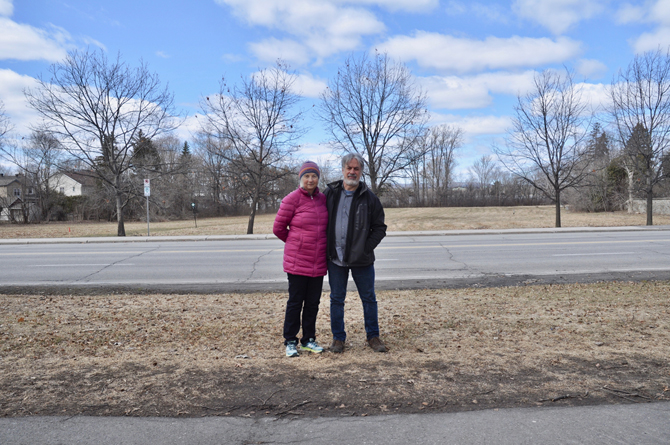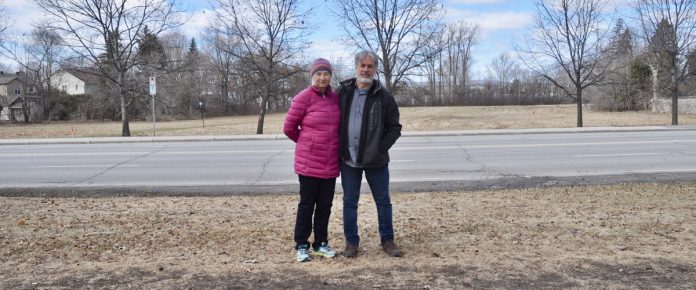Dear Editor,
In February the City of Ottawa, at the bidding of the NCC, changed the zoning of the southern part of Rochester Field along Richmond Road from Open Space (O1L[310]-h) to Traditional Mainstreet (TM). This change will allow construction of two mid-rise buildings along Richmond Road in this NCC owned parkland and significantly reduce the view of the Ottawa River from Byron Linear Park and from the neighbourhood to the south.
Why is the NCC interested in developing here anyway? The NCC manages these lands for present and future generations of Canadians, with a mandate including such statements as to ‘care for and protect vital public places … where decisions about the use and development of urban lands are based on considerations of environmental sensitivity.’ Let’s not see parkland disappear in a ward which already has a relative shortage of parks.

The NCC wants to develop Rochester Field to be a ‘gateway’ to the Ottawa River. But two six- or seven-storey buildings do not create a gateway; they create a wall. Rochester Field is the only opening to the Ottawa River along the length of Richmond Road. Let’s not create a wall across this unique vista.
And this is all without a developer or site plan on the table. Although on paper the TM zoning provides for a maximum of six storeys, experience in Kitchissippi suggests that once a developer is involved, height and density increases. Think about recent and proposed developments along Richmond Road: the Convent development where the original heritage building is walled in by taller condos, the proposed Kristy’s development, …
A short summary of how we got here:
- In the 1950s the Rochester family deeded the field to the precursor of the NCC. The family continued to live in the heritage house until 1989. The house is now a restaurant: the Keg Manor, leased from the NCC.
- In official plans going back at least to 2003 the City of Ottawa has designated Rochester Field in its entirety as Open Space.
- The NCC contested this designation and went to the Ontario Municipal Board (OMB) to appeal for the right to develop the field. This appeal has been on the books since 2003.
- After much debate, the city favoured the Sir John A. McDonald (SJAM) Parkway for the western portion of phase two of the LRT, but the NCC resisted. Finally, in 2015 the 100 Day Solution was struck: the NCC would allow the City an underground LRT alignment under the SJAM Parkway. As part of the deal the NCC could develop a portion of Rochester Field to the north of the Keg Manor and Maplelawn (not along Richmond Road) and the NCC would drop its longstanding appeal with the OMB.
- The NCC then consulted the public and presented three options, one of which involved development along the southern edge of Rochester Field, along Richmond Road. None of the options were enthusiastically received. The option with development along Richmond Road had the highest negative reaction.
- The NCC then developed a fourth option, different from the three above, which was never presented to the public before it was approved at an NCC board meeting in March 2016. The first time the public was able to see this fourth option was at a zoning amendment meeting in Nov 2017 chaired by Councillor Leiper. The approved zoning change reflects this fourth option.
The NCC now has the right to develop the southern edge of Rochester Field. But it doesn’t have to. We must preserve this public parkland for future generations.
David Broscoe and Diana Partridge,
Westboro
